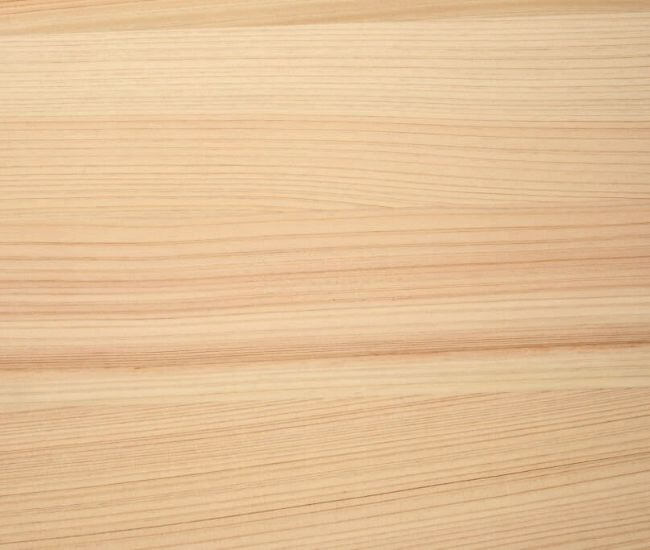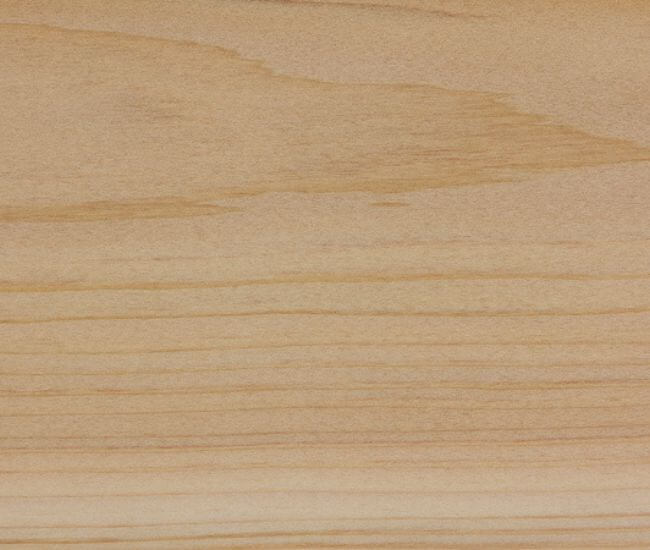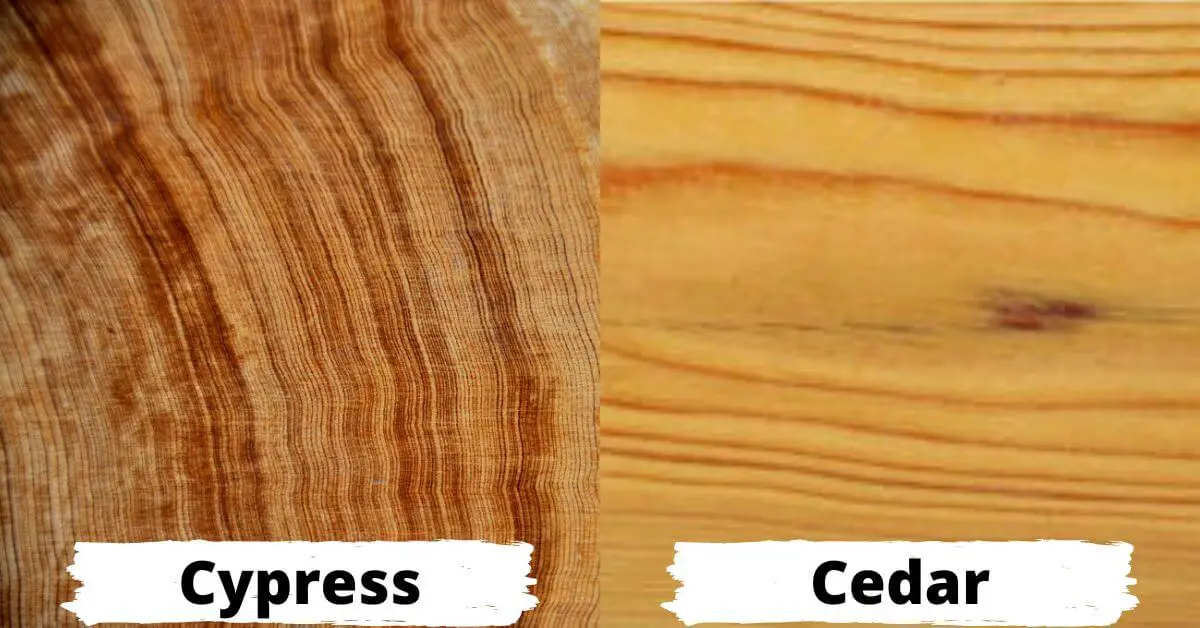Cypress wood is more durable, denser and rot-resistant than cedar. When we compare the color, the color of cypress wood is yellowish brown while the color of cedar wood is pinkish-red. Both the wood species are preferred for domestic furniture. They are good competitors to each other and can be used as alternatives.
But it can be difficult to choose one of these, in this blog I am going to tell you what is the difference between Cypress and Cedar Wood.
Cypress Wood
Cypress wood is known for its durability and rot resistance. It is used for indoor and outdoor furniture and construction applications. Wood has light yellow to light brown color with a fine-grained pattern. Many woodworkers believe that only old growth bald cypress is strong so only old growth wood is suitable for woodworking.

Cypress is a group of several species. Most cypress trees are native to the South and come from coniferous trees or shrubs. Bald Cypress, Leyland Cypress, Mediterranean Cypress, and Australian Cypress are the famous types of Cypress.
Cedar Wood
Cedar is a very durable, naturally weather-resistant and insect-resistant softwood. It offers a light reddish brown rich appearance, making it an ideal choice for interior and exterior furniture.

There are four types of true cedar trees. We can say in other words, the trees which belong to the Cedrus species are as follows: Lebanon cedar, Atlas cedar, Cedar cedar, and Cyprus cedar. The properties and characteristics of all these species are almost similar.
Difference Between Cypress and Cedar Wood
| # | Cypress | Cedar |
| Durability | Very durable | Moderately durable |
| Workability | Generally easy to work | Easy to work with both hand or machine tools, |
| Rot-resistant | High rot resistant | Moderately rot-resistant |
| Type | Softwood | Softwood |
| Wood color | Yellowish brown | Pinkish-red |
| Common Uses | Exterior construction, docks, boatbuilding, interior trim, and veneer. | Shingles, exterior siding and lumber, and boatbuilding |
Cypress and Cedar Uses
Cypress is more popular in the east. It can be used very easily and also requires less maintenance. It is very durable, stable, water and rot-resistant. Therefore, Cypress wood is excellent choice for exterior construction, such as docks, boat building, interior trim, bridges, and cladding.
Cypress wood is resistant to cracking, splitting, warping, or splitting, so cypress wood is preferred for a wide variety of uses. Thousands of years ago, the Egyptians used cypress wood to make mummy cases.
Cedar wood is popular for its beautiful texture and is extremely versatile. Cedar is used in many applications, such as fencing, decking, siding, and trim.
It remains durable for a long time, even after coming in contact with soil and moisture. Therefore, it can be used outside, also. Real cedar has a pleasant aroma and is also naturally rot-resistant. Therefore, it is widely used in making wardrobes.
Read Incense Cedar vs Western Red Cedar
Working With Cypress and Cedar Wood
Both cypress and cedar wood can be easily worked with hand and power tools. According to experts, Cutting and carving cypress may require sharp tools and blades as it is slightly harder than cedar.
Both of these woods have good gluing, finishing, and paint-holding properties. Due to its good density, it holds nails and screws well.
Cypress and cedar are softer than many other softwoods, so they are prone to dents and scratches. The possibility of dents and scratches can be reduced by sealing.
Which Wood is More Durable: Cypress or Cedar Wood?
Old-growth cypress is more durable than young-growth cypress, but only the heartwood part is stable, and the sapwood is not. Cypress wood can be used for ground contact or exterior if it is finished for an outdoor environment.
Some cypress species perform well outdoors, such as the Monterey cypress. Research has proven that Monterey Cypress is an excellent choice for outdoor purposes. It can remain durable for more than 40 years.
Cedar wood is also weather- and rot-resistant and can be used outdoors. But we should know that not all species of cedar are rot-resistant. Some species are too soft to be a good choice for heavy construction and outdoor furniture.
The Similarity Between Cypress and Cedar Wood
Cypress and cedar both fall in the category of softwood. Despite being softwoods, both woods are naturally resistant to rot and insects, making them suitable for indoor and outdoor use.
They are widely available. There is not much price difference, but Cyprus is generally less expensive. The price of wood depends on many factors, such as the quality and location of the wood.
Which Wood is Good for Firewood: Cypress or Cedar?
While cypress and cedar are excellent firewood starters, they cannot be used as primary firewood. Both woods are softwoods, meaning they have low density and quickly burn.
Both kinds of wood can be easily split, and They both burn well and produce a pleasant aroma. So, the choice between cypress and cedar often depends on local availability, personal preference, and intended use.
Different species of Cypress provide different heat levels, but most Cypress species provide about 21.7 million BTUs per cord. On average, cedar wood produces around 15 to 20 million BTUs per cord.
How Hard is Cypress and Cedar Wood?
Since both woods are softwoods, we cannot expect much hardness. But its density is so sufficient that furniture can be made from it.
It is difficult to tell which is harder between cypress and cedar as there are many species, all having different hardness from each other. The frost hardiness of these popular species is given in the table below to give you an idea.
| Cypress Species | Janka Hardness |
| Leyland Cypress | 430 lbf (1,890 N) |
| Bald cypress | 510 lbf (2,270 N) |
| Mediterranean Cypress | 560 lbf (2,490 N) |
| Gowen Cypress | 570 lbf (2,520 N) |
| Monterey Cypress | 620 lbf (2,750 N) |
| Australian Cypress | 1,360 lbf (6,060 N) |
| Cedar Species | |
| Northern white cedar | 320 lbf (1,420 N) |
| Western red cedar | 350 lbf (1,560 N) |
| Incense Cedar | 470 lbf (2,090 N) |
| Spanish Cedar | 600 lbf (2,670 N) |
| Australian Red Cedar | 700 lbf (3,130 N) |
| Eastern Redcedar | 900 lbf (4,000 N) |
Conclusion
Cypress and cedar are both excellent wood species. They have their own pros and cons. You have to pay attention while buying wood of both species because sometimes wood sellers sell wood of the other species to the customer and charge more than the actual price.
You should know basic cypress and cedar to avoid this to identify the true species. Secondly, you should always buy from a trusted dealer.


Comments are closed.